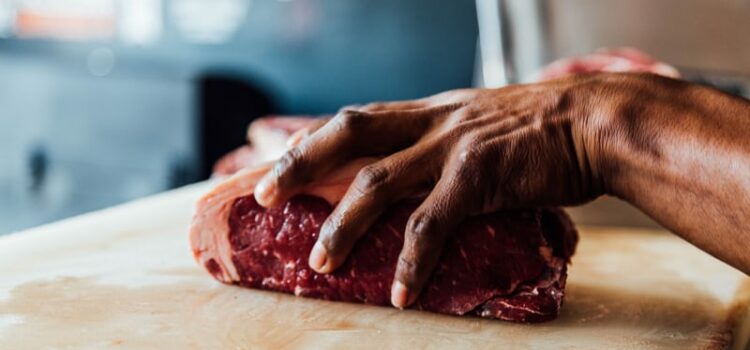

This article is an excerpt from the Shortform book guide to "Fast Food Nation" by Eric Schlosser. Shortform has the world's best summaries and analyses of books you should be reading.
Like this article? Sign up for a free trial here .
Why is there so much E. coli in beef? How does this affect food quality at fast food restaurants?
E. coli is common in beef products, particularly in mass production and factory farming. Cows get sick and in turn, pass along diseases to humans.
Read more about E. coli in beef and why it’s commonly found in fast food.
E. coli in Beef Starts In the Feedlot
E. coli in beef has likely been present in American cattle herds for decades. But until the rise of industrial-scale, centralized meatpacking driven by the demands of the fast food industry, its spread was fairly limited. The disease gets its start in the vast feedlots of today’s slaughterhouses.
These facilities are marked by appalling sanitary conditions, where the cattle are packed into close quarters, given little exercise, and splash around in pools of manure. This creates ideal conditions for bacteria to grow and make the animals sick. This is exacerbated by what the cattle are now increasingly being fed: the rendered remains of dead sheep and other cattle, as well as dead dogs and cats purchased from animal shelters. Natural herbivores, cows’ stomachs are not designed to eat other animals. Forcing them to do so is not only inhumane and cruel, but also facilitates the growth of deadly parasites in their bodies that are then passed on to the humans who eventually consume their meat.
Things get even worse after the animals are slaughtered. We’ve already seen how unskilled and poorly trained workers make up a larger and larger share of the meatpacking workforce. When these workers improperly pull out the stomach and intestines of the cattle by hand, they often spill the contents of the digestive system all over the slaughterhouse floor. With the industry’s relentless focus on speed and scale, much of this finds its way into the meat that’s sold to consumers. Similarly, these workers are rarely instructed in how to clean and disinfect the knives they use to cut cattle carcasses.
Ground Beef
The statistics paint a truly alarming picture. The US Department of Agriculture estimates that about 1 percent of cattle at industrial feedlots carry E. coli in the stomach. At the standard rate of production, this means that three or four infected cattle are processed at a large slaughterhouse every hour.
The problem is compounded exponentially by ground beef, which is, of course, highly demanded by the fast food industry. Unlike a specific cut of beef, the ground meat in your burger doesn’t just come from one cow. The meat of one infected cow can find its way into 32,000 pounds of ground beef.

———End of Preview———
Like what you just read? Read the rest of the world's best book summary and analysis of Eric Schlosser's "Fast Food Nation" at Shortform .
Here's what you'll find in our full Fast Food Nation summary :
- How the fast food industry reshaped the American economy
- How fast food marketing is manipulating you
- Why the rise of fast food has destroyed family farms across America






